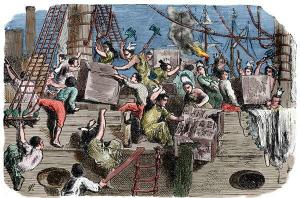How to comment on a painting

Sometimes we have to face things that we have never done before and then we are left wondering how to start. This is what usually happens when many of you prepare to perform a comment on a pictorial work and you wonder Where do I begin?From what I see?For the technical part?From what i know ?.
Next, in this lesson from a TEACHER we will try to give you some little instructions about the steps to follow to comment on a painting, but not before making it clear that the guidelines that we will give are flexible and therefore you can change the order, being able to adjust to your liking.
Index
- Identification and classification
- Theme of the work
- Composition of the work
- Historical and artistic context of the work
Identification and classification.
One of the first steps to take to comment on a painting is to identify it. The first thing to do when we are in front of a work of art, either physically or in role, is to observe it and, as far as possible, to identify it, that is, it is about knowing which is he
title of the work, the author and the date in which it is made, it does not have to be exact, sometimes mentioning the century is enough.Another of the data that we also believe should appear in this first section is the technique in which the painting is made. Depending on the support we can find that it is made on a wall and therefore is a mural painting, on a cloth, which is what is known as canvas, on board... And the technique, which may well be fresco, tempera, oil, tempera, acrylic ...
Likewise, and if you want and know it, you can put the measurements, as well as the place where it is exposed, whether it is a museum, a gallery, etc.
Theme of the work.
Once the most informative data has been identified and classified, we proceed to delve into the work itself and, for this, the first thing to know is the thematic of the work in general features, that is, to know if we are dealing with a work of a historical, religious, mythological, landscape, abstract, manners, portraitist ...
How to distinguish them? Well, very easy: you just have to make use of observation and see what is represented, the elements that In it they appear, the symbolism of these, the characters, how they are dressed, if there is a main character, etc.

Image: Slideshare
Composition of the work.
Another step to follow to comment on a painting is to comment on its composition. This is usually the most technical part of the commentary and the one that produces the most “head warm-ups”, since we are talking that to carry out this section it is necessary to have a minimum of knowledge. We have to talk about the following things:
- Lines: If they are very marked, if vertical, horizontal, diagonal lines predominate... If the contour of the figures is perfectly visible, if they are fine which means that they are very precise, so much so that they even mark the details, if on the contrary they are thick and we see brushstrokes that are much more spontaneous and loose.
- Colour: Interesting because in many compositions we will see that what predominates is the color over the drawing. Of the colors many things could be said: if they are primary, secondary, if what predominates are dark, light, if there is a chromatic variety, if not, if they are bright ...
- Light: The subject of lighting, which could be summarized in whether it is natural light, and therefore there is a focus or several per where at the time of painting the light really affected what it represented, or on the contrary it is light artificial. In both one and others, what is intended is to give a play of light and shadow, which in turn are related to depth.
- Depth or perspective:And how to know if there is perspective in the painting? easy, notice if the figures tend to get smaller as they go away, in the case of colors, it is seen in the gradation, in the blurring. When the paintings are flat, which means that it lacks such perspective, the opposite of what we have commented previously happens, the colors for example They are uniform, there is no such blurring, a clear example of paintings where there is no type of perspective are some of the works made by Henri Matisse.
- Movement: Paintings also produce a sensation of movement or, on the contrary, a sensation of stillness, due to the presence of static characters and by the predominance of rigid lines compared to those that do reflect movement that tend to be more undulating.
In this other lesson we will talk about the types of perspective in a painting.
Historical and artistic context of the work.
And finally, in order to know how to comment on a work of art it is important talk about the context of the painting. But what is meant by the historical and artistic context of a work?
Before an artist you are a person, and as such, the author stands in a specific time which was characterized by historical and social events that did not occur in other times, and can make painters be influenced by the time they lived. For example, in times of war, an artist could be marked by deaths, injustice and through his paintings they wanted to reflect what he was going through, or quite the opposite, in the face of these adversities they preferred to paint happier things in order to escape from those immoralities.
On the ground of artistic context, you can also talk a little about the artistic facet of the painter, if he was influenced by some work and took it as an example, talk about his ideology, that is, he had artists who were governed by their own principles, ahead of those who really triumphed at the time, cite some of their works, as well as mention curious facts about the same…
And a comment on a painting ends with a personal opinion, well argued, in which you can state if you liked the work or not, explaining why.

Image: blog for als de pmar students - blogger
If you want to read more articles similar to How to comment on a painting - Steps to follow, we recommend that you enter our category of Story.


